Seismic Performance of Deposit Slopes with Underlying Bedrock before and after Reinforcement by Stabilizing Piles
Abstract
1. Introduction
2. Centrifuge Testing Program
2.1. Test Instrumentation
2.2. Similarity Relationship and Slope Model Design
2.3. Soil Properties
2.4. Model Preparation and Test Procedure
3. Acceleration Response and Crest Settlement of Slope
3.1. Horizontal Response Acceleration
- Unreinforced slope
- Slope reinforced by a discretely spaced pile row
- Comparison between unreinforced and reinforced slopes
3.2. Crest Settlements
4. Response Characteristics of Stabilizing Piles under Seismic Load
4.1. Horizontal Displacement
4.2. Bending Moment
4.3. Lateral Pile-Soil Load
5. Conclusions
Author Contributions
Funding
Institutional Review Board Statement
Informed Consent Statement
Data Availability Statement
Conflicts of Interest
References
- Huang, R.Q.; Li, W.L. Analysis of the geo-hazards triggered by the 12 May 2008 Wenchuan Earthquake, China. Bull. Eng. Geol. Environ. 2009, 68, 363–371. [Google Scholar] [CrossRef]
- Ding, Y.; Dang, C.; Yuan, G.X.; Wang, Q.C. Characteristics and remediation of a landslide complex triggered by the 2008 Wenchuan, China earthquake—Case from Yingxiu near the earthquake epicenter. Environ. Earth. Sci. 2012, 67, 161–173. [Google Scholar] [CrossRef]
- Chigira, M.; Wu, X.Y.; Inokuchi, T.; Wang, G.H. Landslides induced by the 2008 Wenchuan earthquake, Sichuan, China. Geomorphology 2010, 118, 225–238. [Google Scholar] [CrossRef]
- Cao, Z.Z.; Youd, T.L.; Yuan, X.M. Gravelly soils that liquefied during 2008 Wenchuan, China earthquake, Ms=8.0. Soil Dyn. Earthq. Eng. 2011, 31, 1132–1143. [Google Scholar] [CrossRef]
- Yin, Y.P.; Wang, F.W.; Sun, P. Landslide hazards triggered by the 2008 Wenchuan earthquake, Sichuan, China. Landslides 2009, 6, 139–152. [Google Scholar] [CrossRef]
- Massey, C.; Della, P.F.; Holden, C.; Kaiser, A.; Richards, L.; Wartman, J.; McSaveney, M.J.; Archibald, G.; Yetton, M.; Janku, L. Rock slope response to strong earthquake shaking. Landslides 2017, 14, 249–268. [Google Scholar] [CrossRef]
- Bourdeau, C.; Havenith, H.B. Site effects modelling applied to the slope affected by the Suusamyr earthquake (Kyrgyzstan, 1992). Eng. Geol. 2008, 97, 126–145. [Google Scholar] [CrossRef]
- Del Gaudio, V.; Wasowski, J. Advances and problems in understanding the seismic response of potentially unstable slopes. Eng. Geol. 2011, 122, 73–83. [Google Scholar] [CrossRef]
- Strenk, P.M.; Wartman, J. Uncertainty in seismic slope deformation model predictions. Eng. Geol. 2011, 122, 61–72. [Google Scholar] [CrossRef]
- Moore, J.R.; Gischig, V.S.; Burjanek, J.; Loew, S.; Fah, D. Site effects in unstable rock slopes: Dynamic behavior of the Randa instability (Switzerland). Bull. Seismol. Soc. Am. 2011, 101, 3110–3116. [Google Scholar] [CrossRef]
- Gischig, V.S.; Eberhardt, E.; Moore, J.R.; Hungr, O. On the seismic response of deep seated rock slope instabilities—Insights from numerical modeling. Eng. Geol. 2015, 193, 1–18. [Google Scholar] [CrossRef]
- Carder, D.R.; Temporal, J. A Review of the Use of Spaced Piles to Stabilise Embankment and Cutting Slopes (TRL Report 466); Transportation Research Laboratory: Berkshire, UK, 2000. [Google Scholar]
- Li, X.; Pei, X.; Gutierrez, M.; He, S.M. Optimal location of piles in slope stabilization by limit analysis. Acta Geotech. 2012, 7, 253–259. [Google Scholar] [CrossRef]
- Li, Z.; Escoffier, S.; Kotronis, P. Centrifuge modeling of batter pile foundations under sinusoidal dynamic excitation. Bull. Earthq. Eng. 2016, 14, 673–697. [Google Scholar] [CrossRef]
- Lirer, S. Landslide stabilizing piles: Experimental evidences and numerical interpretation. Eng. Geol. 2012, 149–150, 70–77. [Google Scholar] [CrossRef]
- Wu, Y.; He, S.M.; Li, X.P. Failure mechanism of anti-slide pile under seismic wave. J. Sichuan Univ. Eng. Sci. 2009, 41, 284–288. [Google Scholar]
- Smethurst, J.A.; Powrie, W. Monitoring and analysis of the bending behaviour of discrete piles used to stabilise a railway embankment. Géotechnique 2007, 57, 663–677. [Google Scholar] [CrossRef]
- Spence, R. The full-scale laboratory: The practice of post-earthquake reconnaissance missions and their contribution to earthquake engineering. Bull. Earthq. Eng. 2015, 13, 1581–1585. [Google Scholar] [CrossRef]
- Bonilia, L.F. Borehole response studies at the Garner Valley Downhole Array, Southern California. Bull. Seismol. Soc. Am. 2002, 92, 3165–3179. [Google Scholar] [CrossRef]
- Ou, J.F.; Luo, Y.H.; Wang, Y.S.; Zhu, X.M.; Zhang, Y.Y. Analysis of response characteristics of slope ground motion based on environmental noise and seismic data: A case study of Lushan Renjia slope. J. Mt. Sci. 2019, 37, 382–391. [Google Scholar]
- Yu, Y.; Deng, L.; Sun, X.; Lü, H. Centrifuge modeling of dynamic behavior of pile-reinforced slopes during earthquakes. J. Cent. South Univ. Tech. 2010, 17, 1070–1078. [Google Scholar] [CrossRef]
- Al-Defae, A.H.; Knappett, J.A. Centrifuge modeling of the seismic performance of pile-reinforced slopes. J. Geotech. Geoenviron. Eng. 2014, 140, 04014014. [Google Scholar] [CrossRef]
- Al-Defae, A.H.; Knappett, J.A. Newmark sliding block model for pile-reinforced slopes under earthquake loading. Soil Dyn. Earthq. Eng. 2015, 75, 265–278. [Google Scholar] [CrossRef]
- Wang, L.P.; Zhang, G. Centrifuge model test study on pile reinforcement behavior of cohesive soil slopes under earthquake conditions. Landslides 2014, 11, 213–223. [Google Scholar] [CrossRef]
- Ma, N.; Wu, H.G.; Ma, H.M.; Wu, X.Y.; Wang, G.H. Examining dynamic soil pressures and the effectiveness of different pile structures inside reinforced slopes using shaking table tests. Soil Dyn. Earthq. Eng. 2019, 116, 293–303. [Google Scholar] [CrossRef]
- Huang, Y.; Xu, X.; Liu, J.J.; Mao, W. Centrifuge modeling of seismic response and failure mode of a slope reinforced by a pile-anchor structure. Soil Dyn. Earthq. Eng. 2020, 131, 1–11. [Google Scholar] [CrossRef]
- Ellis, E.A.; Durrani, I.K.; Reddish, D.J. Numerical modelling of discrete pile rows for slope stability and generic guidance for design. Géotechnique 2010, 60, 185–195. [Google Scholar] [CrossRef]
- Sharafi, H.; Shams Maleki, Y. Evaluation of the lateral displacements of a sandy slope reinforced by a row of floating piles: A numerical-experimental approach. Soil Dyn. Earthq. Eng. 2019, 122, 148–170. [Google Scholar] [CrossRef]
- Won, J.; You, K.; Jeong, S.; Kim, S. Coupled effects in stability analysis of pile-slope systems. Comput. Geotech. 2005, 32, 304–315. [Google Scholar] [CrossRef]
- Erfani, J.A.; Liang, R.Y.; Li, L.; Liu, H.L. Yield acceleration and permanent displacement of a slope reinforced with a row of drilled shafts. Soil Dyn. Earthq. Eng. 2014, 57, 68–77. [Google Scholar] [CrossRef]
- Kanagasabai, S.; Smethurst, J.A.; Powrie, W. Three-dimensional numerical modelling of discrete piles used to stabilize landslides. Can. Geotech. J. 2011, 48, 1393–1411. [Google Scholar] [CrossRef]
- Kourkoulis, R.; Gelagoti, F.; Anastasopoulos, I.; Gazetas, G. Slope stabilizing piles and pile-groups: Parametric study and design insights. J. Geotech. Geoenviron. Eng. 2011, 137, 663–677. [Google Scholar] [CrossRef]
- Li, C.D.; Wu, J.; Tang, H.M.; Hu, X.L.; Liu, X.W.; Wang, C.Q.; Liu, T.; Zhang, Y.Q. Model testing of the response of stabilizing piles in landslides with upper hard and lower weak bedrock. Eng. Geol. 2016, 204, 65–76. [Google Scholar] [CrossRef]
- Abdoun, T.; Dobry, R.; O’Rourke, T.; Goh, S.H. Pile response to lateral spreads: Centrifuge modeling. J. Geotech. Geoenviron. Eng. 2003, 129, 869–878. [Google Scholar] [CrossRef]
- Brandenberg, S.J.; Boulanger, R.W.; Kutter, B.L.; Chang, D. Behavior of pile foundations in laterally spreading ground during centrifuge tests. J. Geotech. Geoenviron. Eng. 2005, 131, 1378–1391. [Google Scholar] [CrossRef]
- Knappett, J.A.; Madabhushi, S.P.G. Influence of axial load on lateral pile response in liquefiable soils. Part I: Physical modelling. Géotechnique 2009, 59, 571–581. [Google Scholar] [CrossRef]
- Garala, K.T.; Madabhushi, S.P.G. Seismic behaviour of soft clay and its influence on the response of friction pile foundations. Bull. Earthq. Eng. 2019, 17, 1919–1939. [Google Scholar] [CrossRef]
- Chen, Y.M.; Li, J.C.; Yang, C.B.; Zhu, B.; Zhan, L.T. Centrifuge modeling of municipal solid waste landfill failures induced by rising water levels. Can. Geotech. J. 2017, 54, 1739–1751. [Google Scholar] [CrossRef]
- Zhou, Y.G.; Sun, Z.B.; Chen, Y.M. Zhejiang University benchmark centrifuge test for LEAP-GWU-2015 and liquefaction responses of a sloping ground. Soil Dyn. Earthq. Eng. 2018, 113, 698–713. [Google Scholar] [CrossRef]
- Sun, Z.L.; Kong, L.W.; Guo, A.G.; Xu, G.F.; Bai, W. Experimental and numerical investigations of the seismic response of a rock–soil mixture deposit slope. Environ. Earth. Sci. 2019, 78, 716. [Google Scholar] [CrossRef]
- Kourkoulis, R.; Gelagoti, F.; Anastasopoulos, I.; Gazetas, G. Hybrid method for analysis and design of slope stabilizing piles. J. Geotech. Geoenviron. Eng. 2012, 138, 1–14. [Google Scholar] [CrossRef]
- Wang, K.L.; Lin, M.L. Initiation and displacement of landslide induced by earthquake–A study of shaking table model slope test. Eng. Geol. 2011, 122, 106–114. [Google Scholar] [CrossRef]
- GB (2010) Code for Seismic Design of Buildings, 50011-2010.; China Building Industry Press: Beijing, China.
- Newmark, N.M. Effects of earthquakes on dams and embankments. Géotechnique 1965, 15, 139–160. [Google Scholar] [CrossRef]
- Al-Defae, A.H.; Caucis, K.; Knappett, J.A. Aftershocks and the whole-life seismic performance of granular slopes. Géotechnique 2013, 63, 1230–1244. [Google Scholar] [CrossRef]
- Bathe, K.J. Finite Element Analysis in Engineering Analysis; Prentice-Hall: Hoboken, NJ, USA, 1982; pp. 76–102. [Google Scholar]
- PLAXIS 2D. Reference Manual; Last Version 2015.2.19890.4979; Delft University of Technology: Delft, The Netherlands, 2015. [Google Scholar]
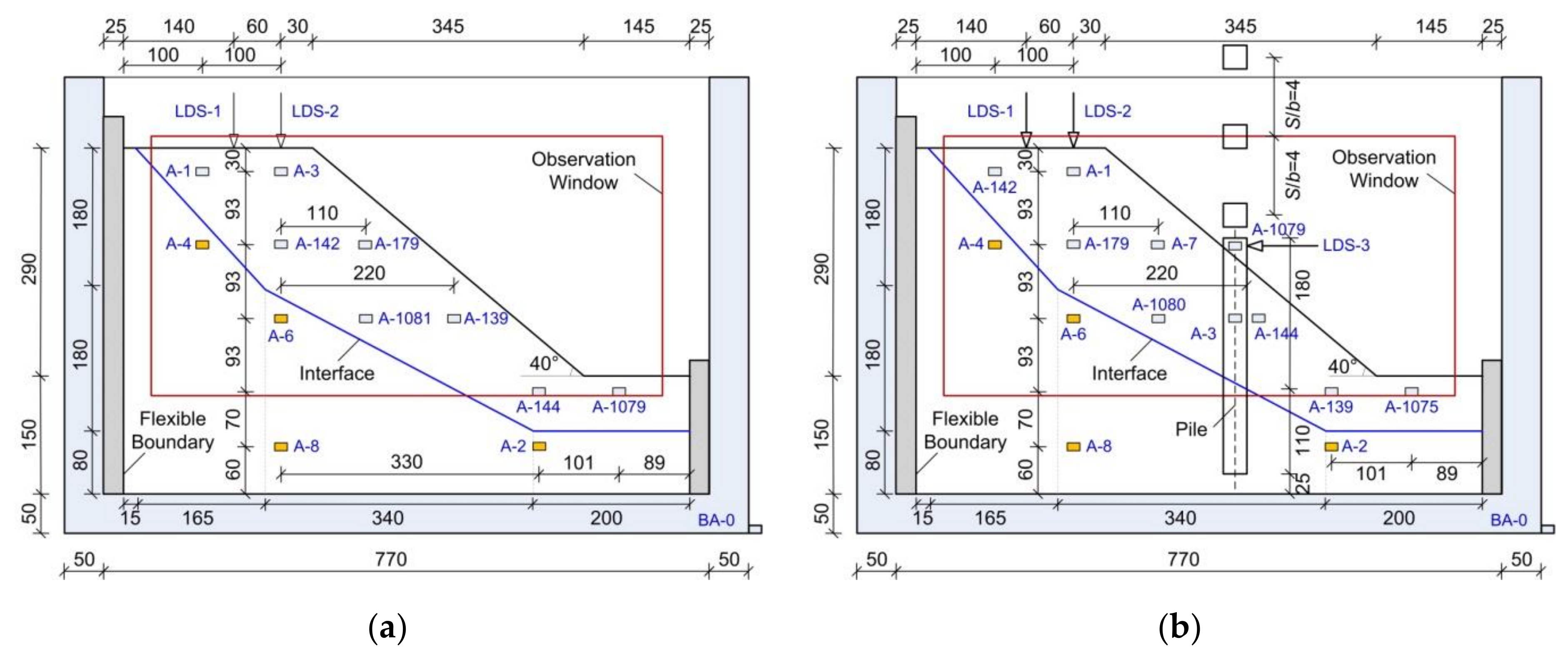
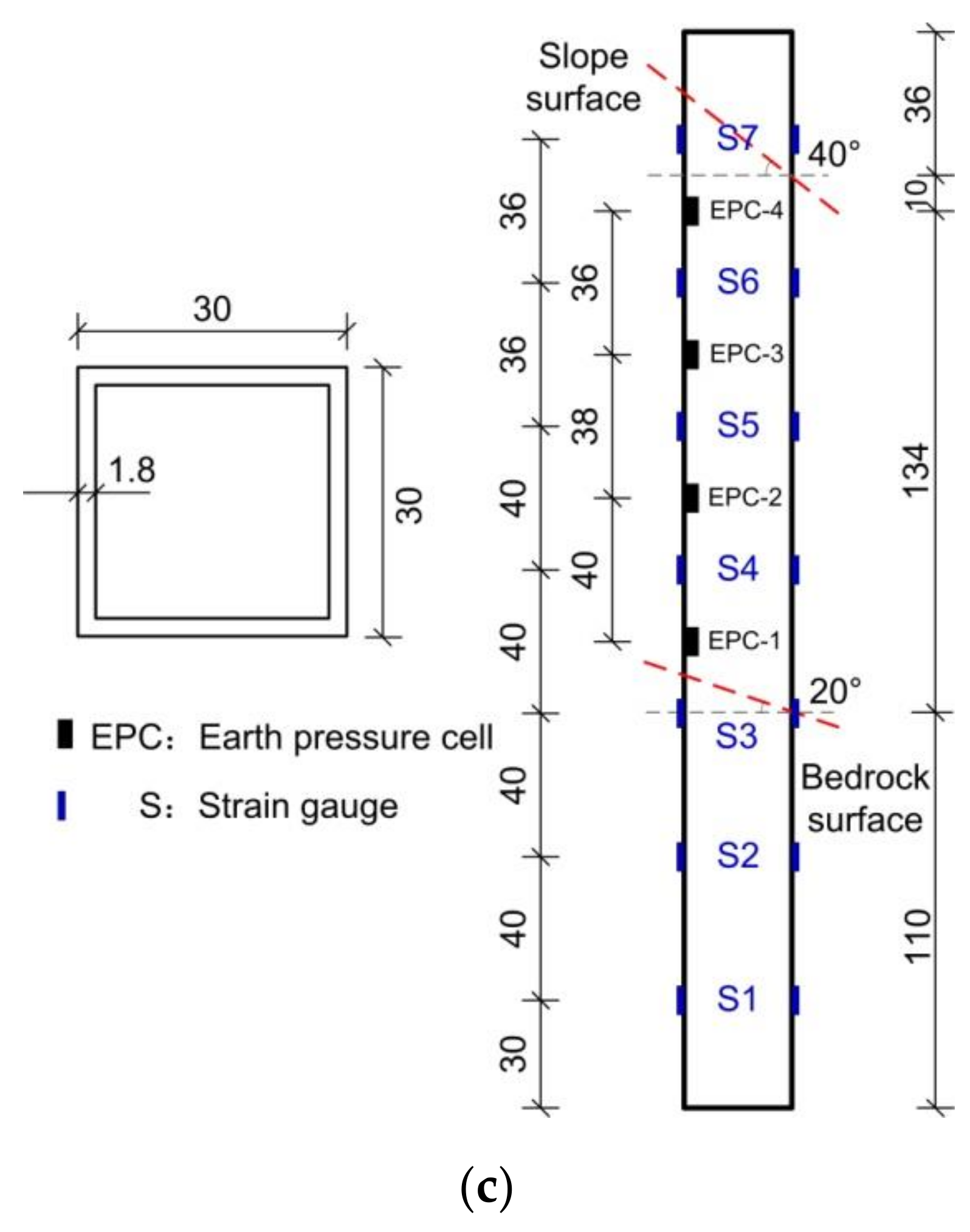
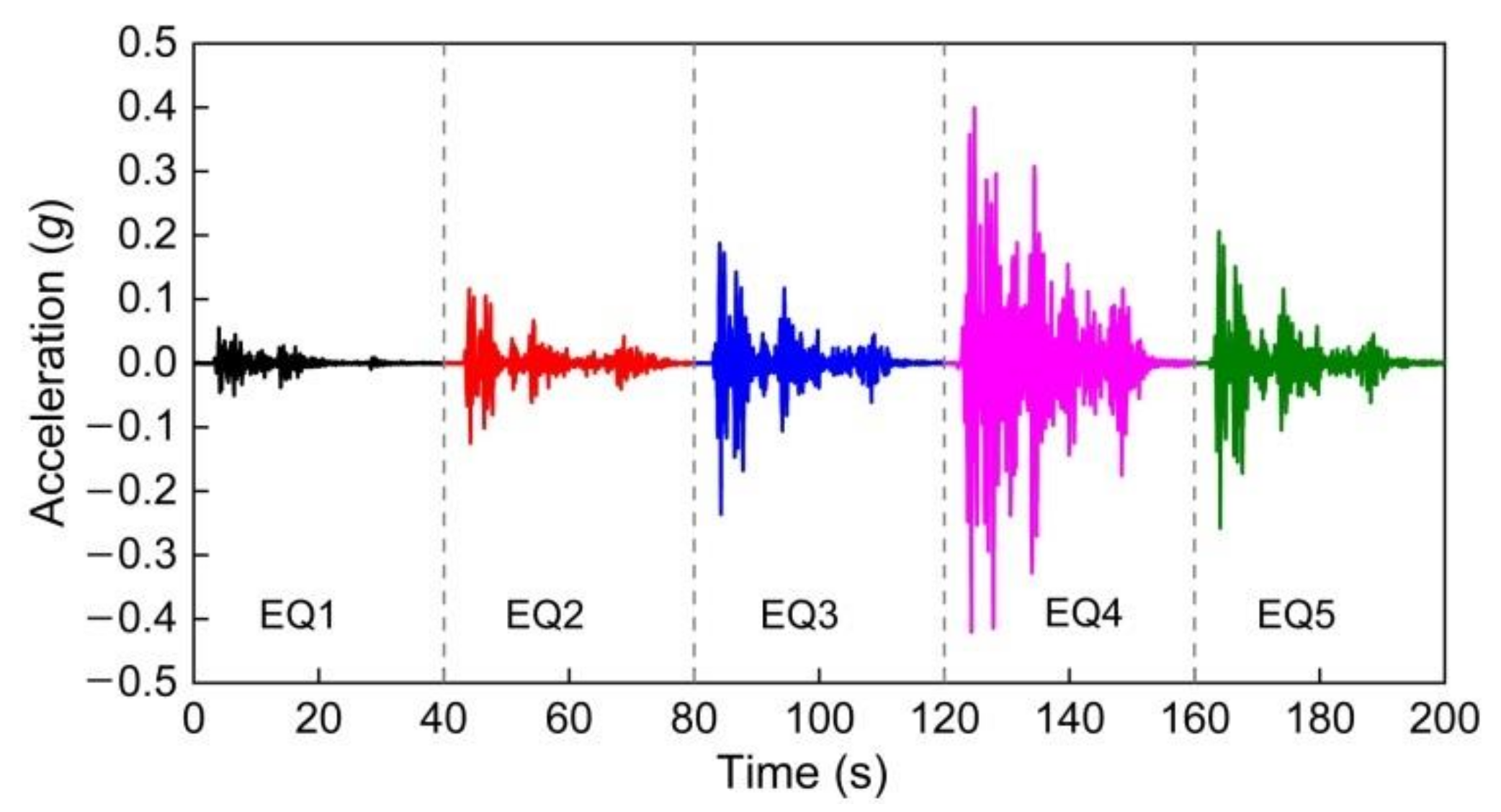
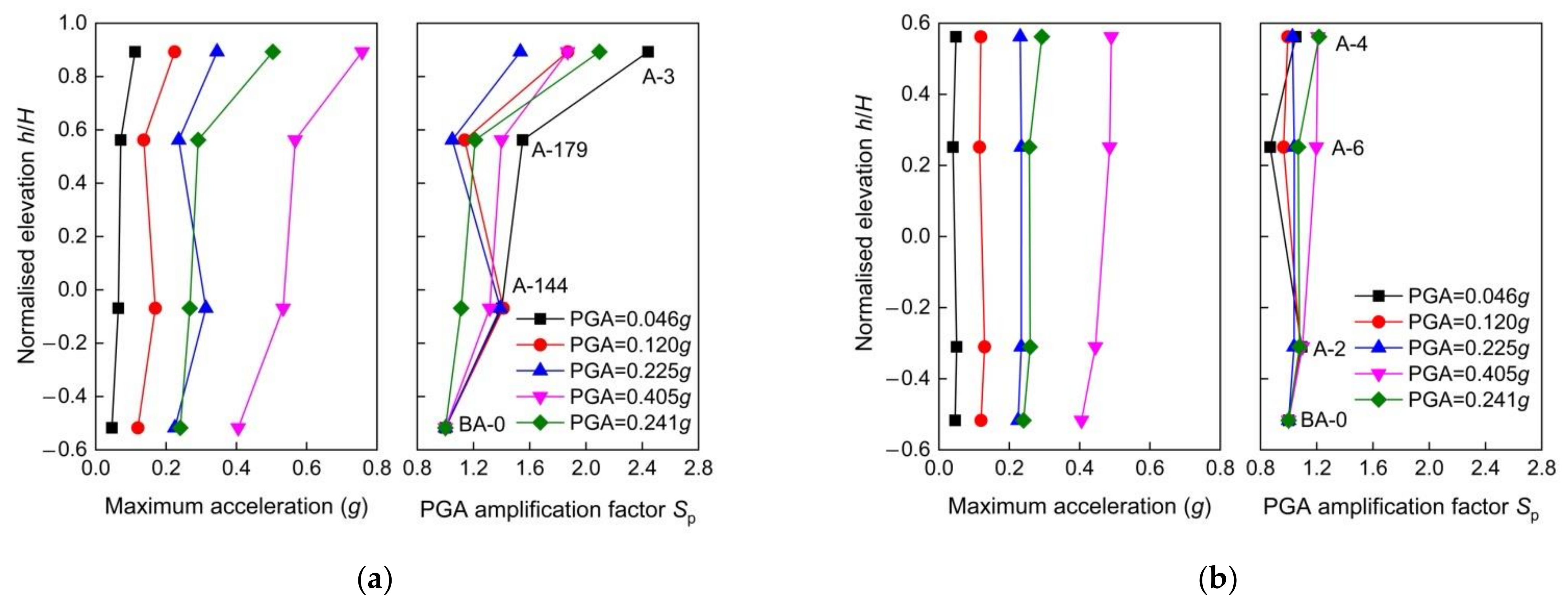
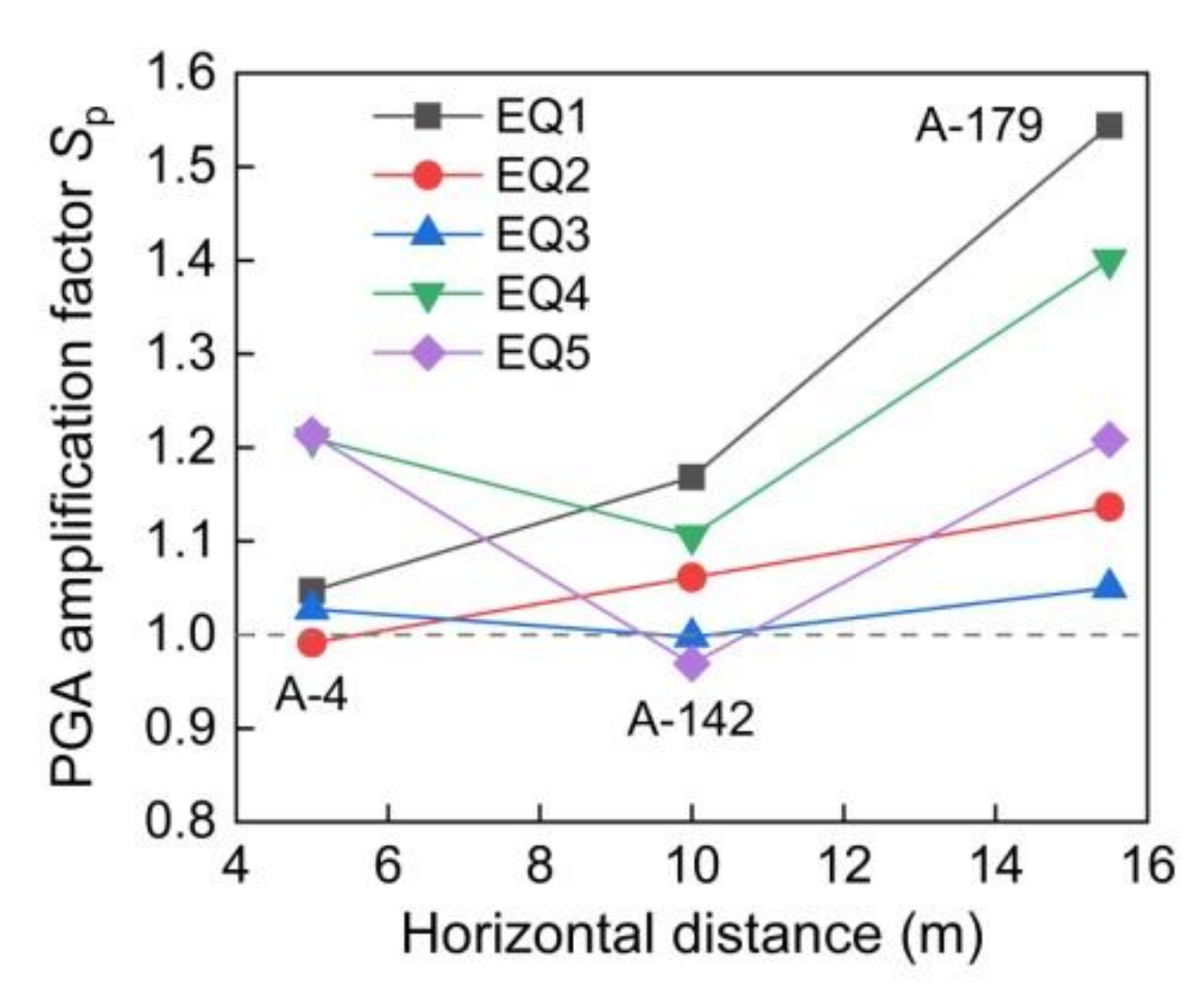
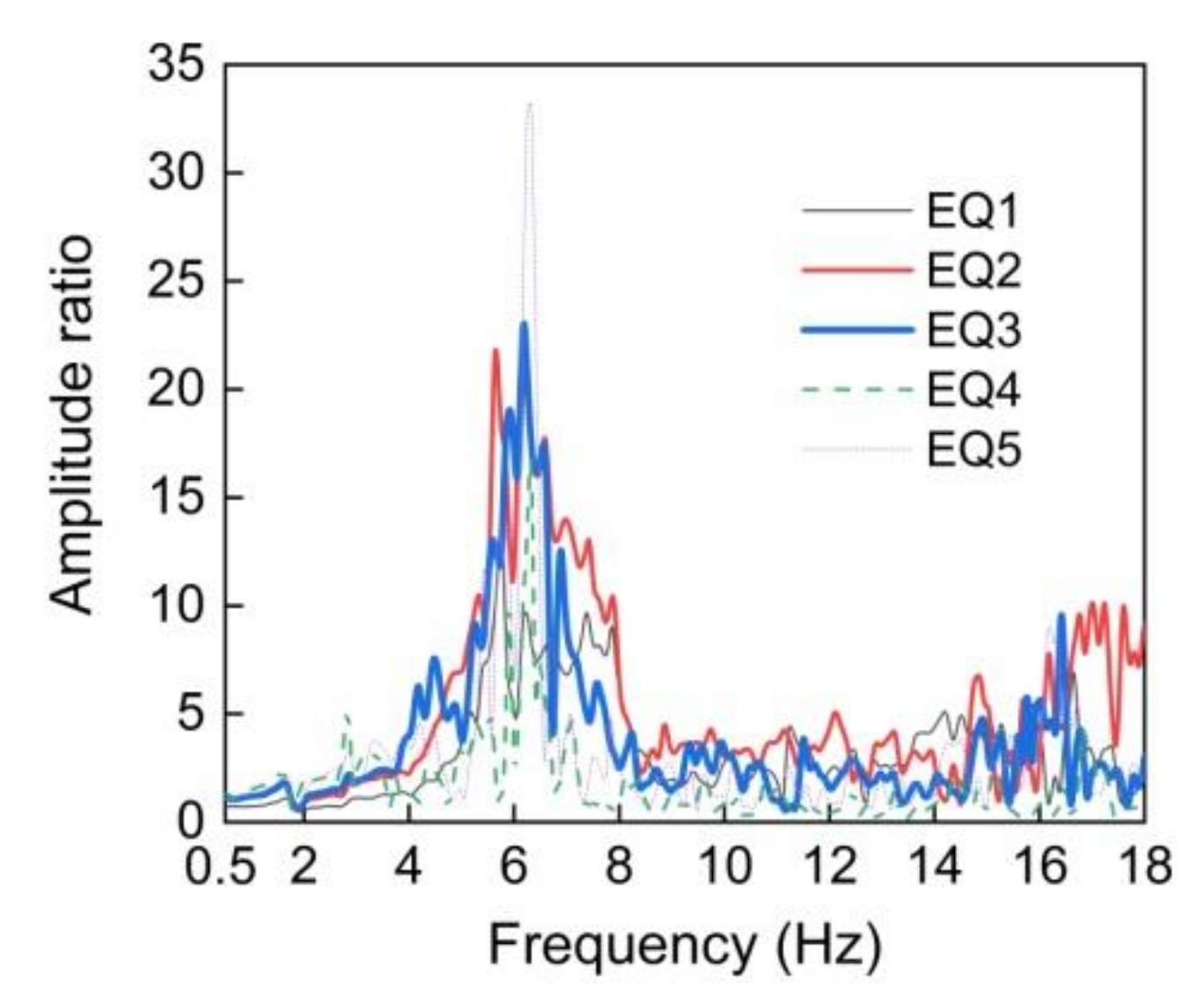
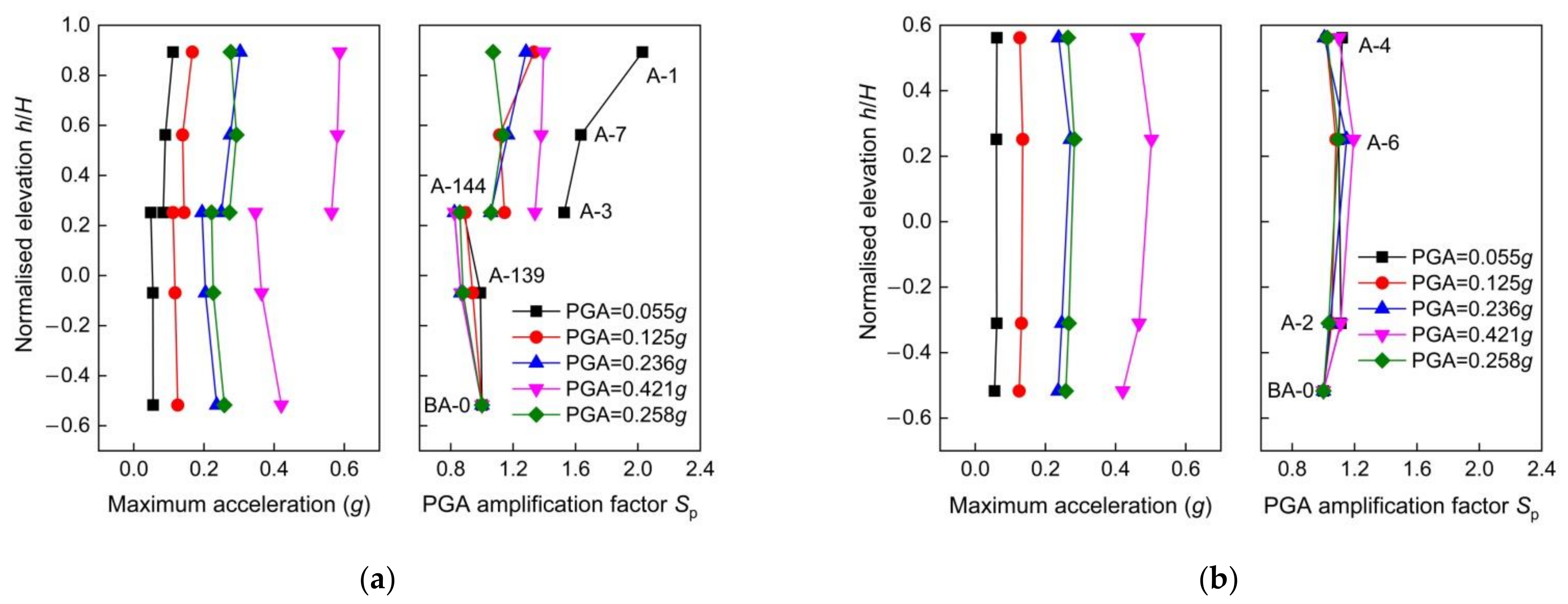
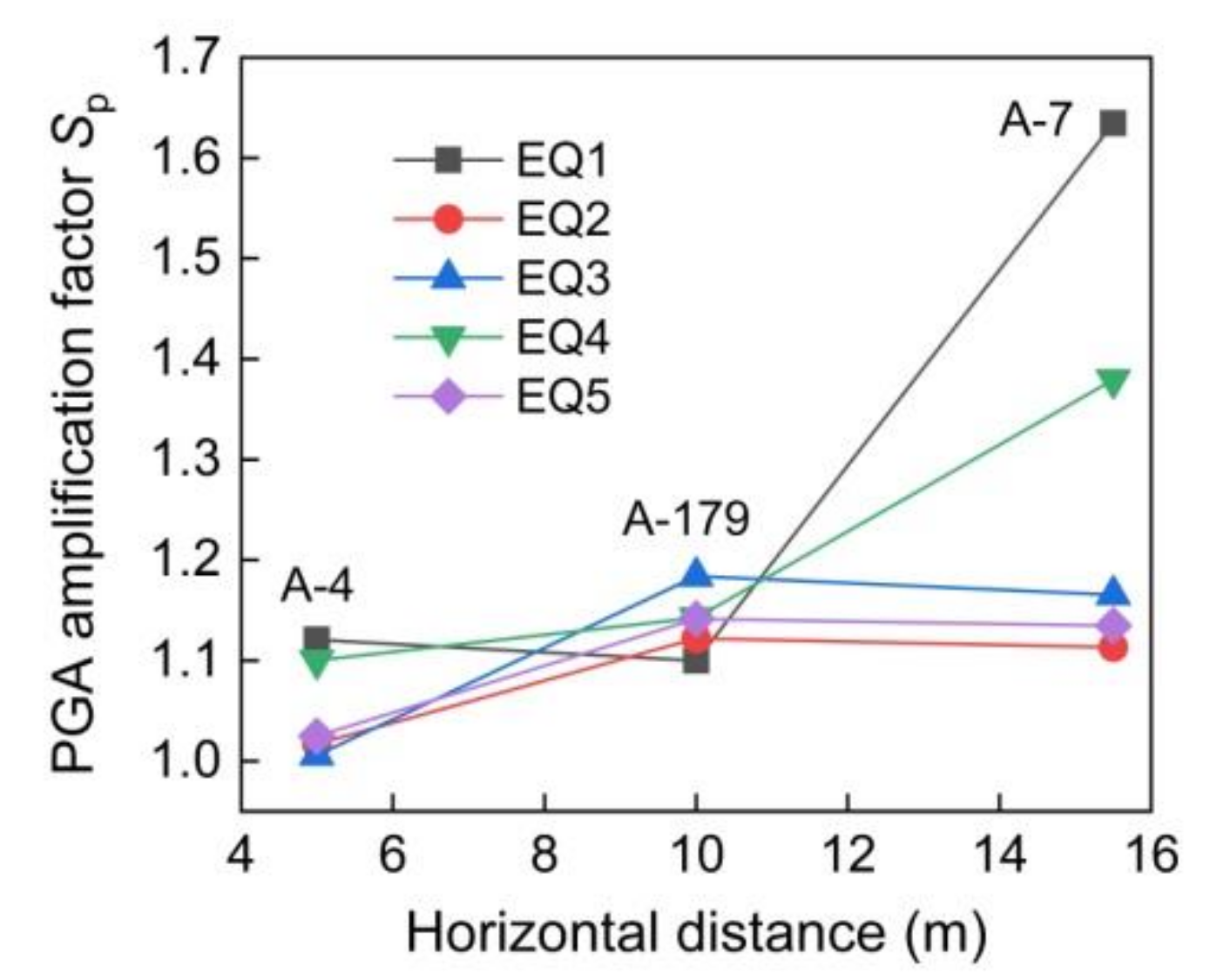

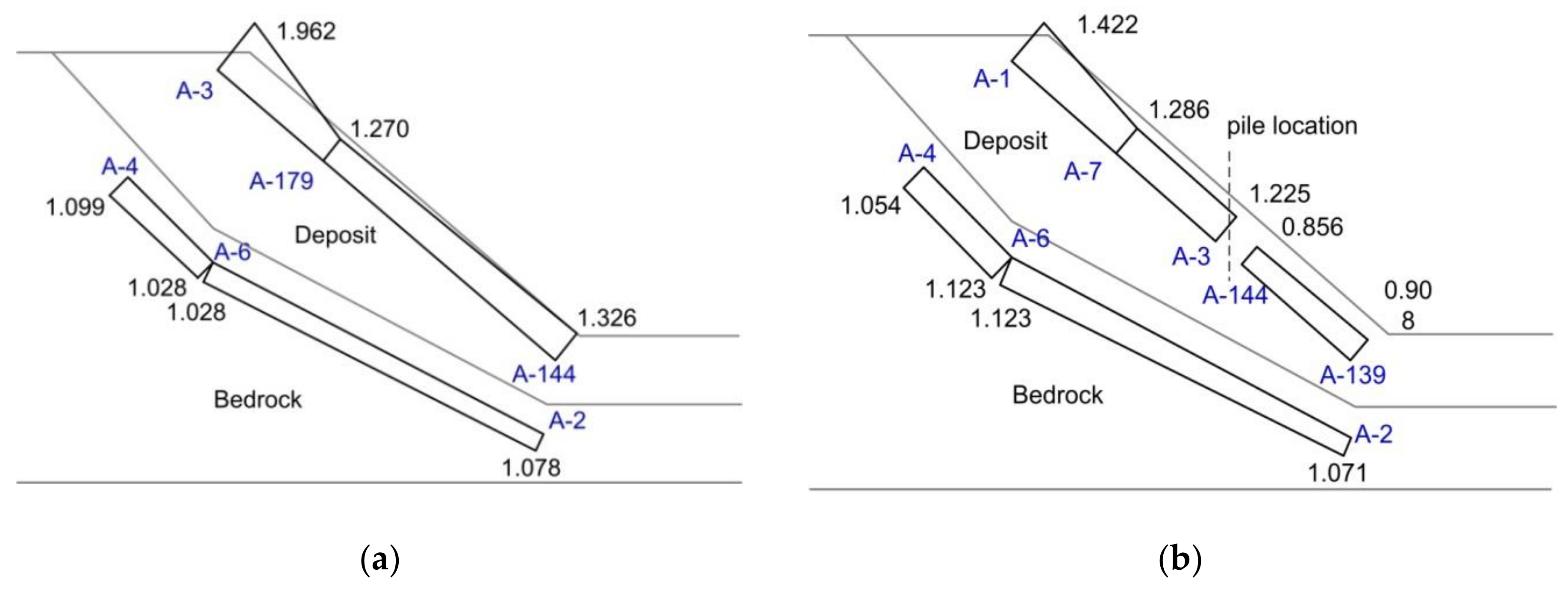
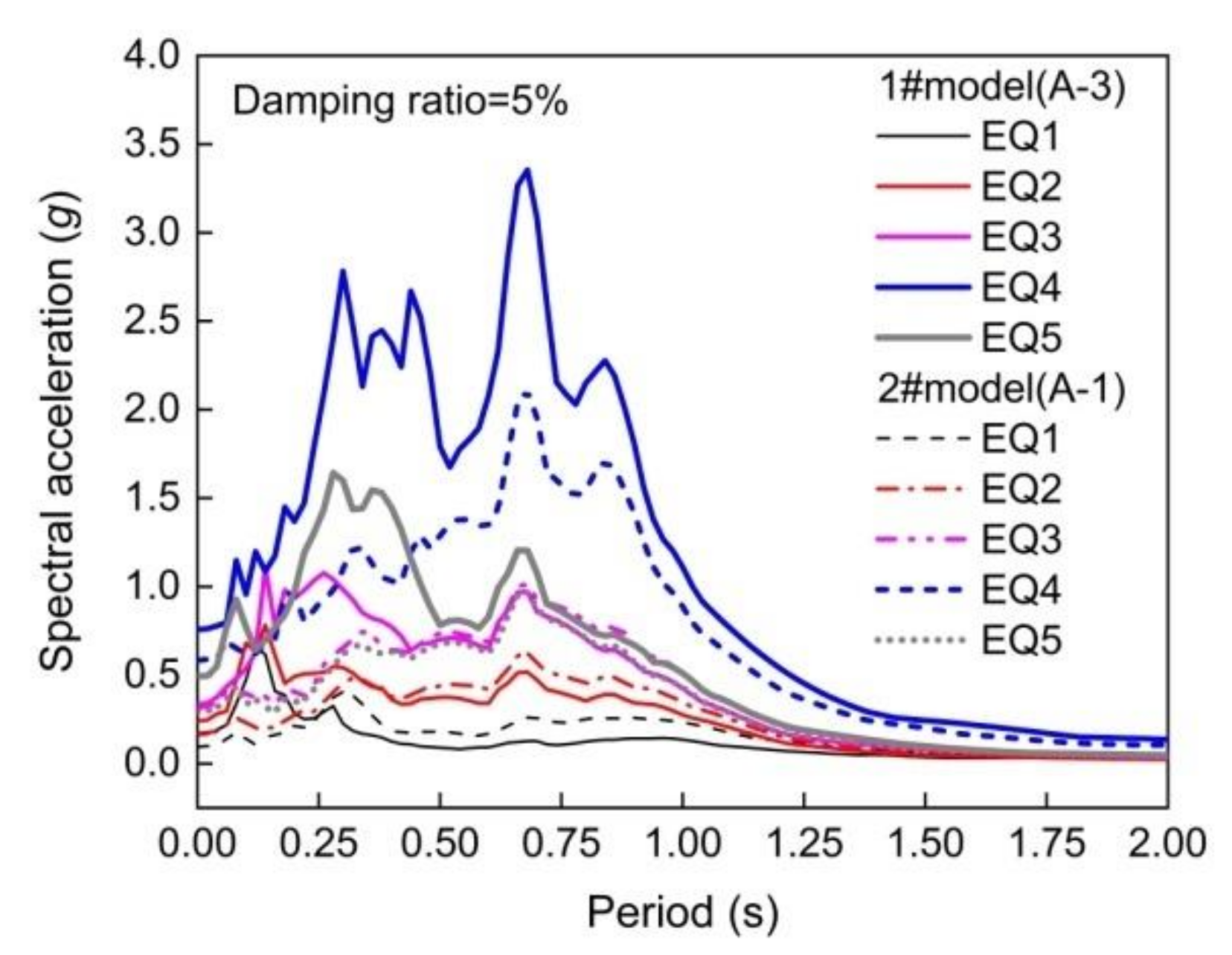

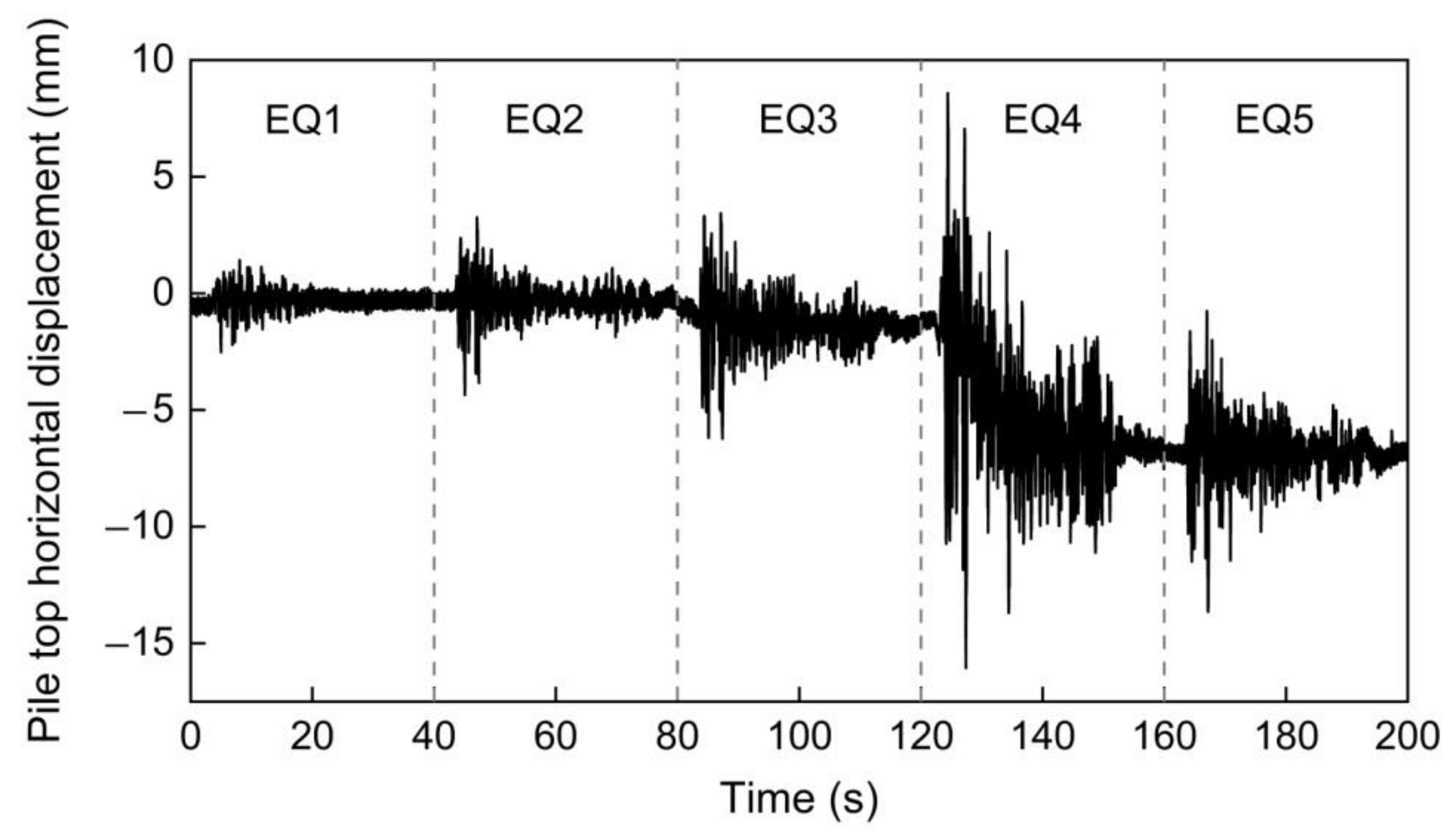
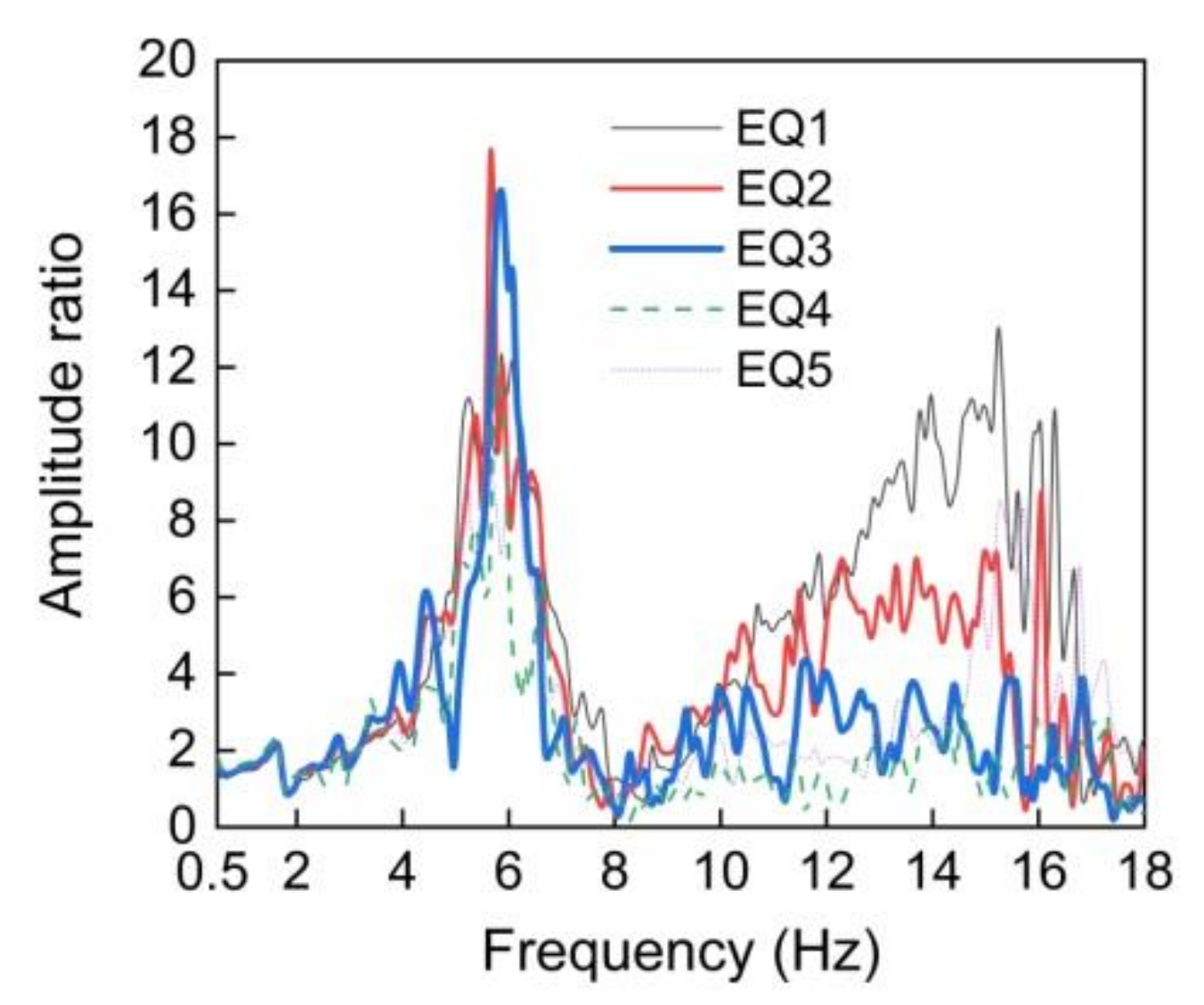
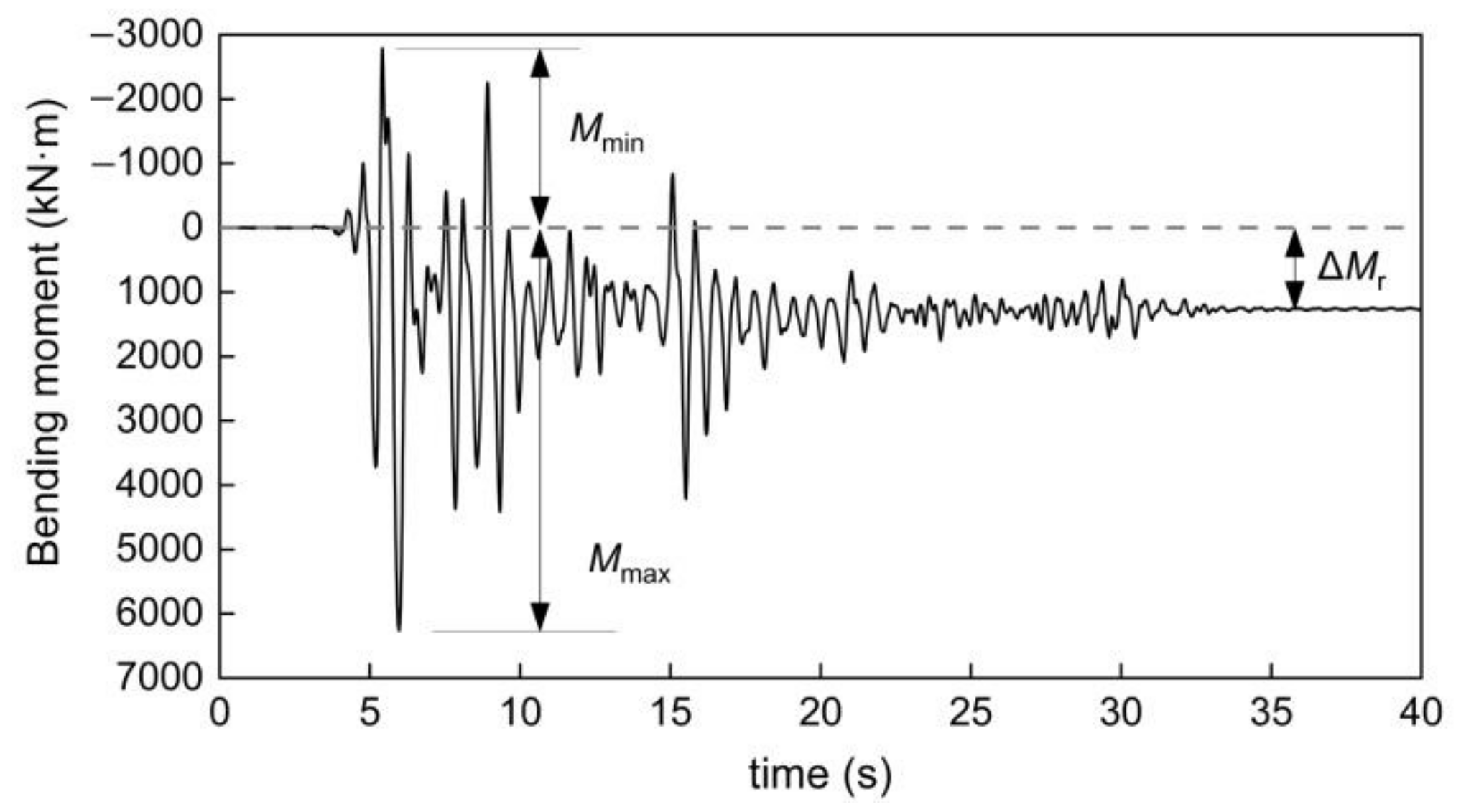
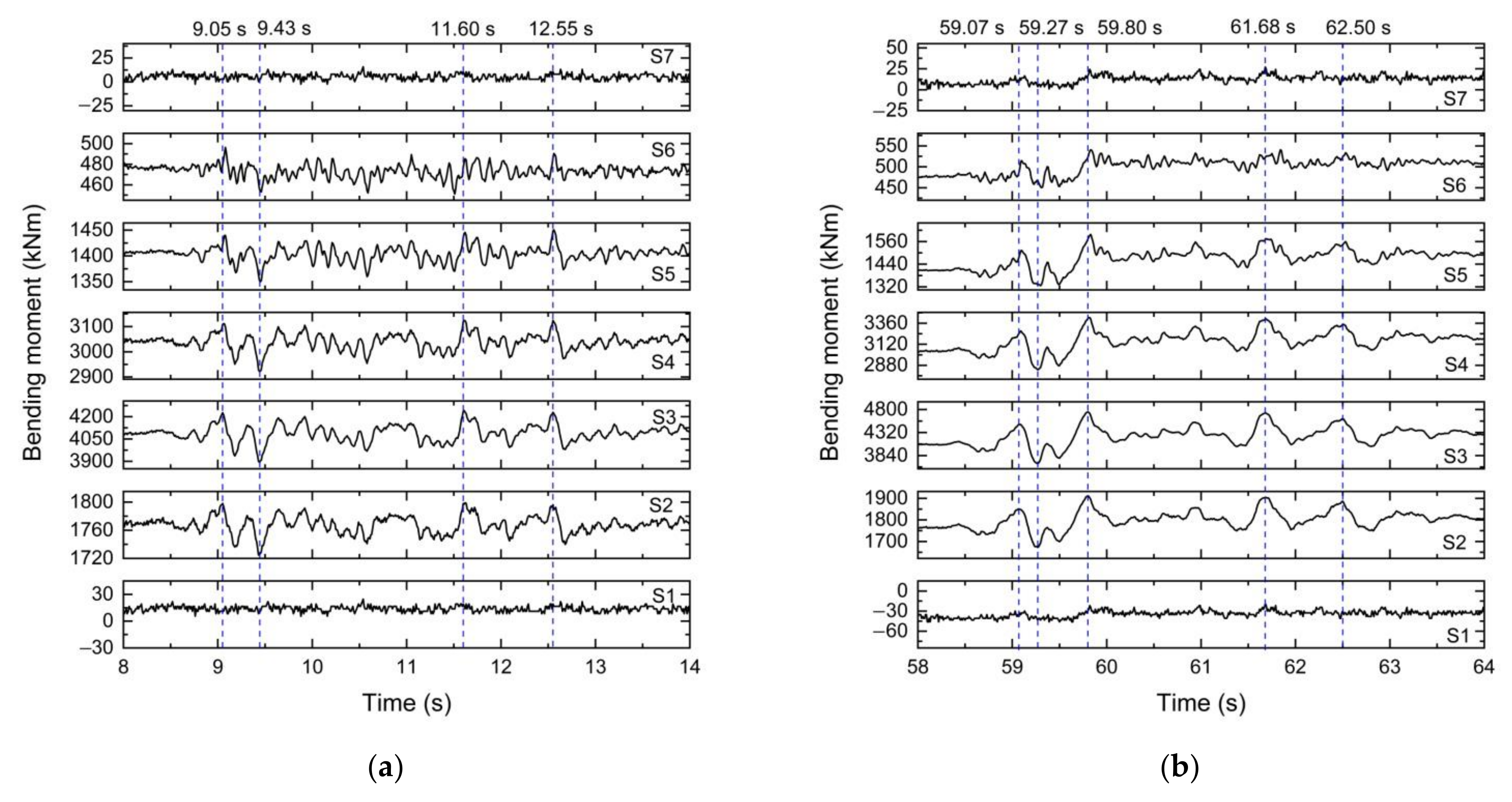


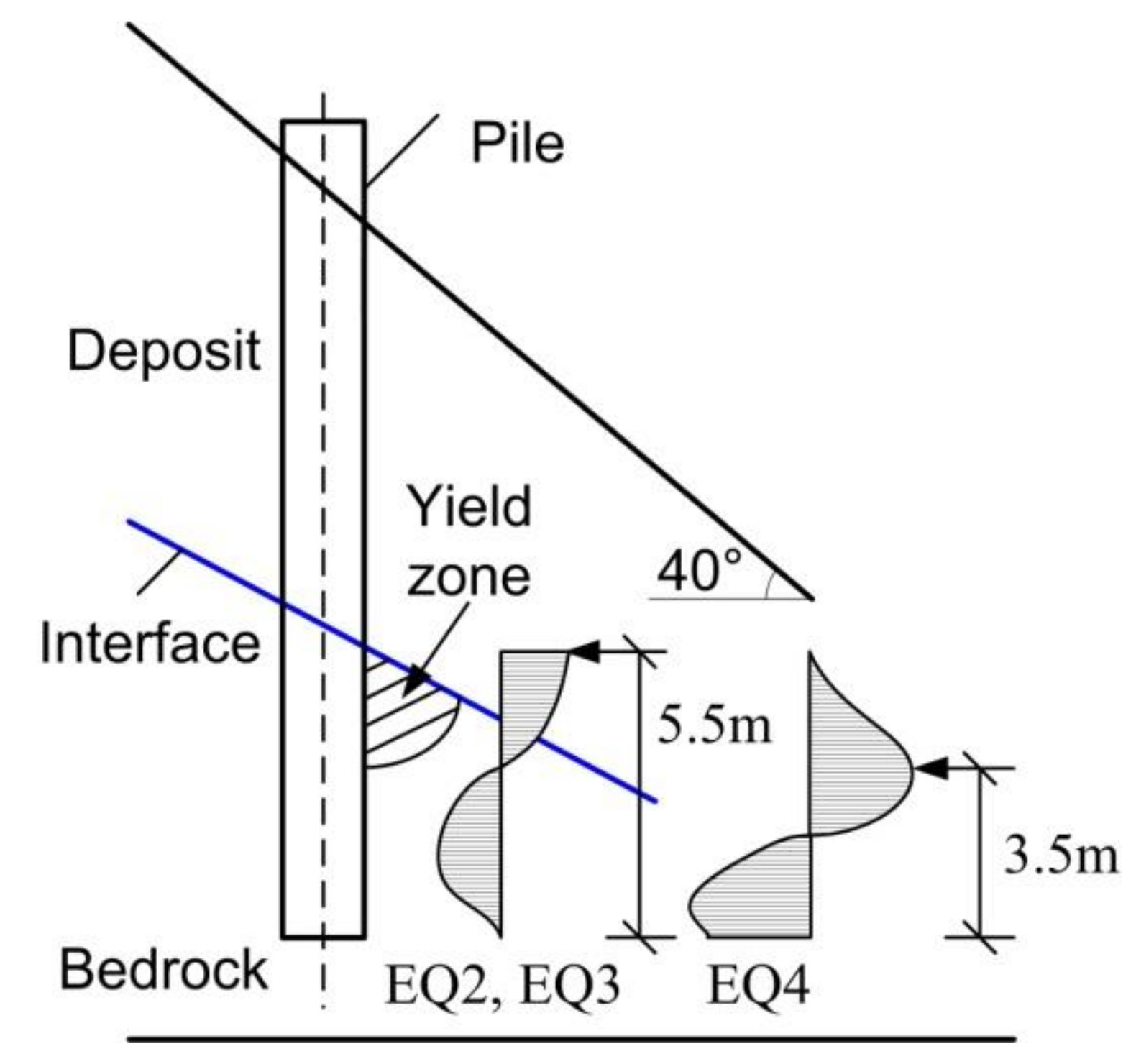

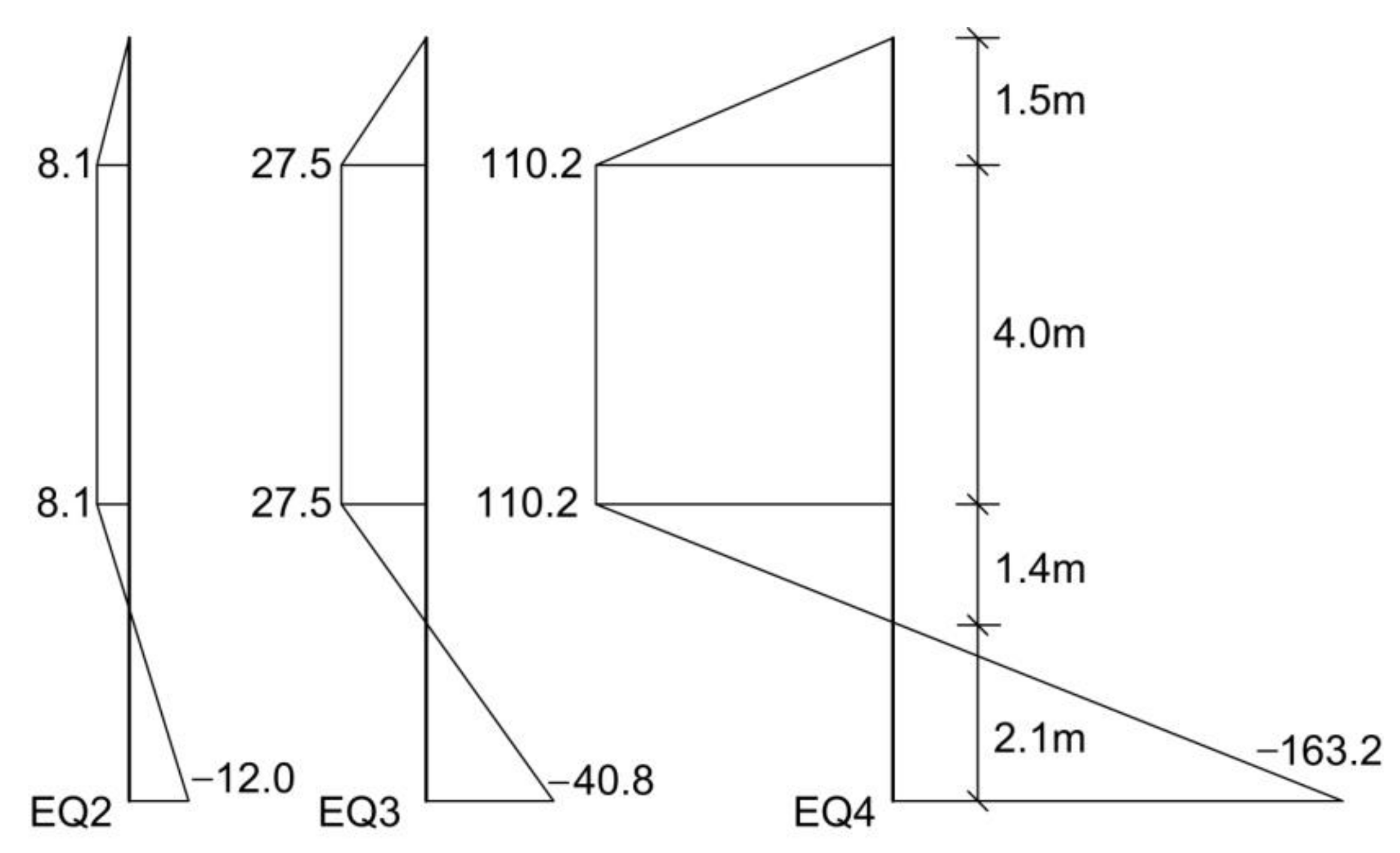
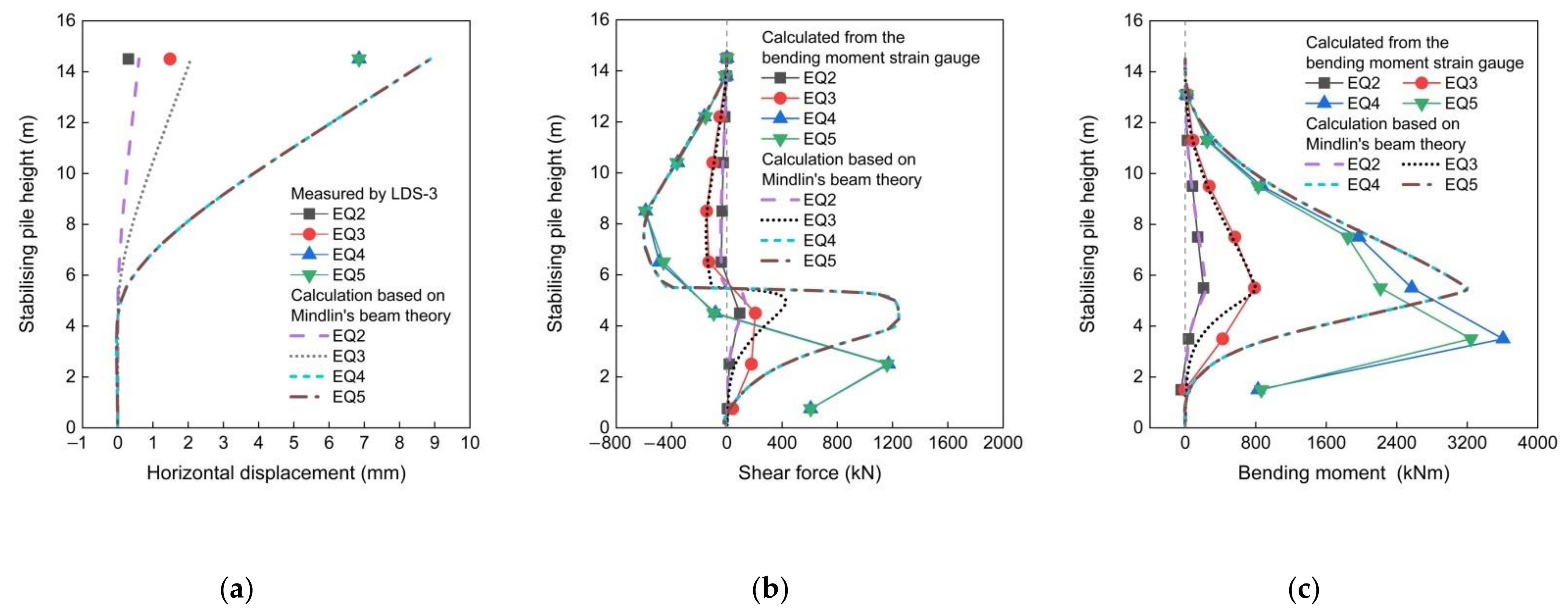
| Parameter | Dimension | Model Scale under Acceleration Ng (Model:Prototype) |
|---|---|---|
| Length/displacement | L | 1:N |
| Mass | M | 1:N3 |
| Force | MLT−2 | 1:N2 |
| Bending moment | ML2T−2 | 1:N3 |
| Velocity | LT−1 | 1:1 |
| Acceleration | LT−2 | 1:N |
| Frequency | T−1 | 1:N |
| Time (dynamic) | T | N:1 |
| Modulus | ML−1T−2 | 1:1 |
| Damping ratio | 1 | 1:1 |
| Parameter | Stabilizing Pile |
|---|---|
| Unit weight γ(kN/m3) | 24 |
| Young’s modulus E (kPa) | 3e7 |
| Axial stiffness EA (kN) | 6.75 e 7 |
| Flexural rigidityEI (kNm2) | 1.265 e 7 |
| Poisson’s ratio ν | 0.2 |
| Gradation of Model Materials/% | d50/mm | Cu | Cc | |||||
|---|---|---|---|---|---|---|---|---|
| 10–5 mm | 5–2 mm | 2–1 mm | 1–0.5 mm | 0.5–0.25 mm | <0.25 mm | |||
| 34.4 | 33.5 | 13.1 | 9.0 | 3.0 | 7.0 | 3.3 | 9.95 | 1.70 |
Publisher’s Note: MDPI stays neutral with regard to jurisdictional claims in published maps and institutional affiliations. |
© 2021 by the authors. Licensee MDPI, Basel, Switzerland. This article is an open access article distributed under the terms and conditions of the Creative Commons Attribution (CC BY) license (https://creativecommons.org/licenses/by/4.0/).
Share and Cite
Sun, Z.; Kong, L.; Bai, W.; Wang, Y. Seismic Performance of Deposit Slopes with Underlying Bedrock before and after Reinforcement by Stabilizing Piles. Appl. Sci. 2021, 11, 5664. https://doi.org/10.3390/app11125664
Sun Z, Kong L, Bai W, Wang Y. Seismic Performance of Deposit Slopes with Underlying Bedrock before and after Reinforcement by Stabilizing Piles. Applied Sciences. 2021; 11(12):5664. https://doi.org/10.3390/app11125664
Chicago/Turabian StyleSun, Zhiliang, Lingwei Kong, Wei Bai, and Yong Wang. 2021. "Seismic Performance of Deposit Slopes with Underlying Bedrock before and after Reinforcement by Stabilizing Piles" Applied Sciences 11, no. 12: 5664. https://doi.org/10.3390/app11125664
APA StyleSun, Z., Kong, L., Bai, W., & Wang, Y. (2021). Seismic Performance of Deposit Slopes with Underlying Bedrock before and after Reinforcement by Stabilizing Piles. Applied Sciences, 11(12), 5664. https://doi.org/10.3390/app11125664







